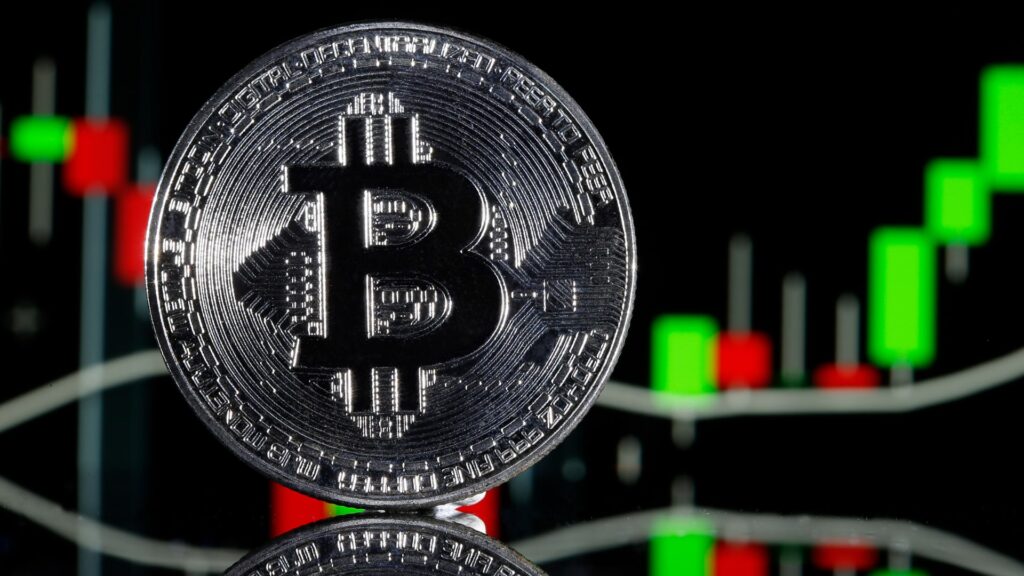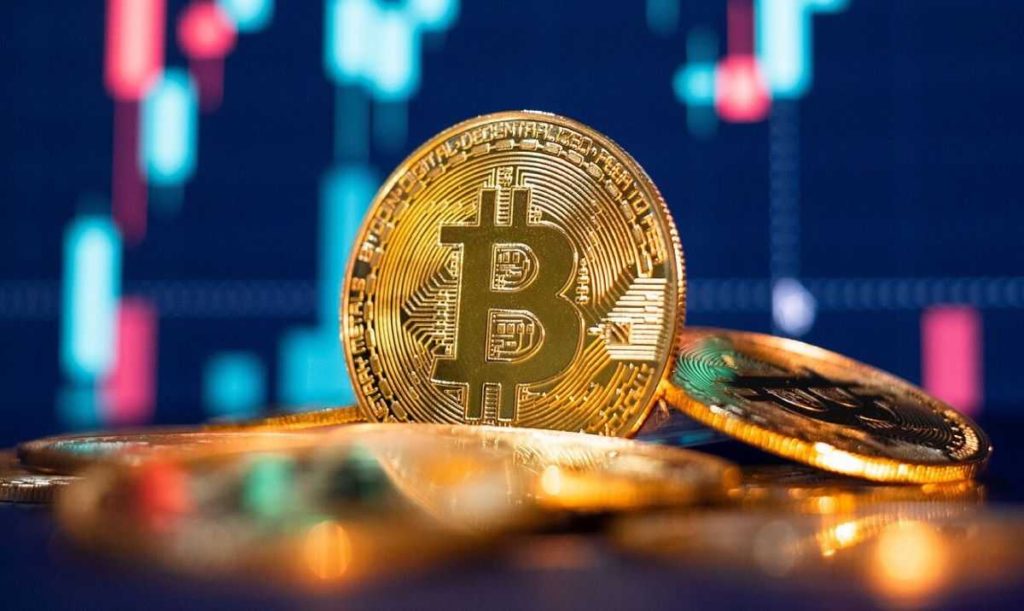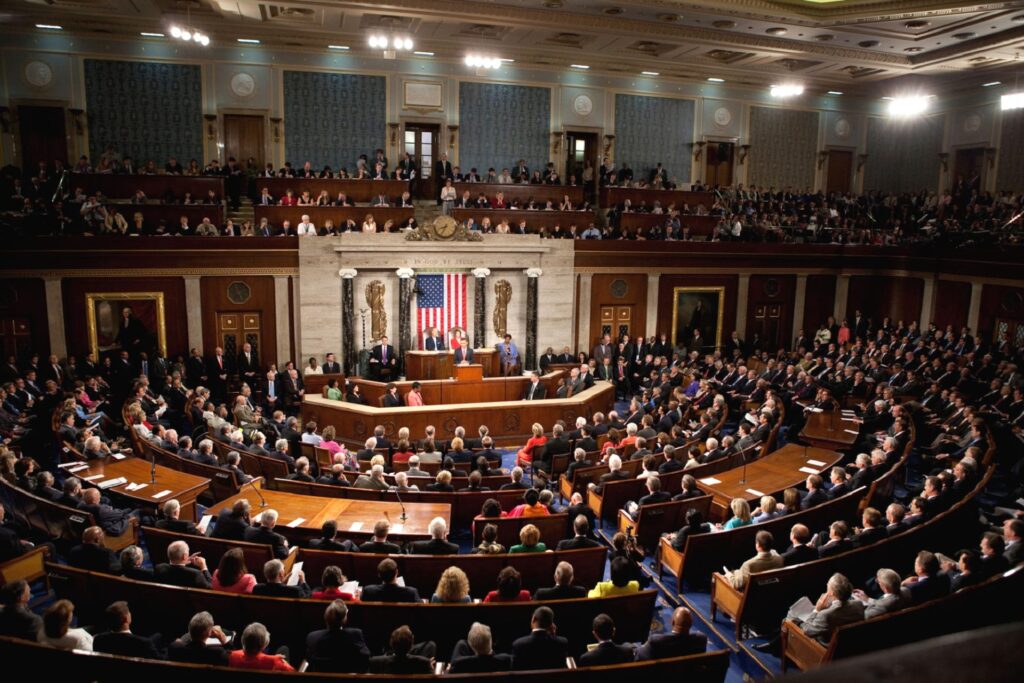Cathie Wood’s ARK Invest has expanded its investment in Bullish, the digital asset exchange that recently made its public debut on the New York Stock Exchange under the ticker BLSH.
According to trade disclosures filed Friday, ARK Innovation ETF (ARKK) purchased 72,537 Bullish shares, ARK Next Generation Internet ETF (ARKW) acquired 21,354 shares, and ARK Fintech Innovation ETF (ARKF) bought an additional 11,122 shares.
The combined purchases amount to over $5 million in new exposure to Bullish, further strengthening ARK’s position in the exchange. This move follows an earlier $8.27 million investment made in mid-October across ARK’s funds.
Since Bullish’s $1.1 billion listing, ARK has accumulated roughly $172 million worth of shares across multiple ETFs, underscoring its growing confidence in the platform’s long-term potential.
Bullish Shares Rebound After Market Volatility
Bullish stock closed at $50.57 on Friday, marking a 1.24% increase and a recovery from recent market turbulence.
The exchange, founded by Block.one and led by CEO Tom Farley, has quickly become one of the most watched digital asset platforms following its NYSE debut.
Farley, the former president of the New York Stock Exchange, has been steering Bullish’s expansion strategy to position it as a leader in regulated crypto trading.
Celebrating the U.S. Expansion
The timing of ARK’s latest purchase coincides with Bullish’s U.S. launch celebration in New York, where the firm hosted an event featuring leading figures in the digital asset industry.
“The energy in the room said it all — the future is Bullish,” the company posted on X following the event.
Earlier in October, Bullish officially began operations in 20 U.S. states after securing both a BitLicense and a money transmission license from New York regulators.
Its first U.S. clients include BitGo and Nonco, which began spot trading on the platform as part of Bullish’s initial market rollout.
Global Growth and Trading Volume
Since its international launch in 2021, Bullish has processed more than $1.5 trillion in trading volume and now ranks among the top 10 exchanges globally for Bitcoin and Ether transactions.
The exchange’s rapid growth and its regulatory approval in the U.S. suggest that it could become a major player in bridging traditional finance with the digital asset ecosystem.
Bitcoin’s price slipped to $109,200 on Wednesday, falling more than 6% from its Monday peak of $116,400, as traders awaited the Federal Reserve’s widely anticipated 25 basis point interest rate cut.
The drop surprised some analysts, given that most expected the rate decision to be priced into markets.
Despite the modest policy shift, risk appetite weakened as investors grew cautious about the Fed’s future trajectory and broader economic conditions.
Fed Signals End of Balance Sheet Reduction
The Fed’s statement confirmed that quantitative tightening would end on December 1, marking a significant policy shift after months of balance sheet contraction.
This change, often viewed as supportive for markets, did little to immediately lift crypto sentiment.
The central bank’s updated “dot plot” now points to three interest rate cuts in 2025, with Goldman Sachs analysts forecasting two more 25 basis point cuts by March and June 2026.
If realized, the Fed’s benchmark rate would settle between 3% and 3.25%, suggesting a gradual easing cycle ahead.
Analysts Expect Short-Term Volatility
According to Hyblock, a crypto analytics platform, Bitcoin’s post-FOMC reactions often follow a familiar pattern: short-term declines followed by recovery.
“Recent history has shown that the FOMC leads to a price drop in BTC, followed by a move up,” the firm noted.
“If price does dip post-FOMC and signs of bullish confluence emerge, such as bid-heavy orderbooks, it would likely present good opportunities for investors.”
Despite that, sentiment remains cautious.
Traders are looking beyond the rate cuts to evaluate the broader economic landscape—especially the impact of U.S. layoffs, ongoing trade tensions under President Trump’s renewed tariff push, and questions surrounding the sustainability of the artificial intelligence boom.
Broader Economic Concerns Cloud Bitcoin Outlook
While Wednesday’s rate cut was fully expected, the market is now focused on Powell’s upcoming remarks at the FOMC press conference.
Investors hope for clarity on how the Fed plans to navigate slowing growth, lingering inflation risks, and market liquidity conditions heading into 2026.
For now, Bitcoin’s reaction underscores continued sensitivity to macroeconomic developments, particularly as the Fed transitions from tightening to a more accommodative stance.
Bitcoin’s price dipped to $109,200 on Wednesday, marking a notable decline ahead of the U.S. Federal Reserve’s latest policy announcement.
The Fed confirmed a 25-basis-point interest rate cut, aligning with market expectations, but Bitcoin’s 6% slide from its Monday rally to $116,400 caught traders off guard.
Analysts attributed the drop to short-term risk aversion before Fed Chair Jerome Powell’s press conference, despite the anticipated cut.
Market Expectations vs. Reality
According to the Fed’s latest dot plot, policymakers expect three additional cuts in 2025.
Analysts at Goldman Sachs project at least two more 25-basis-point cuts by mid-2026, potentially bringing the benchmark rate down to the 3–3.25% range.
This outlook should theoretically support risk assets like Bitcoin, yet the crypto’s near-term movements diverged from expectations.
“Recent history has shown that the FOMC leads to a price drop in BTC, followed by a move up,” said analysts at Hyblock, a crypto analytics firm. “If price does dip post-FOMC and signs of bullish confluence emerge, such as bid-heavy orderbooks, it would likely present good opportunities for investors.”
Investors Eye Broader Economic Concerns
With rate cuts largely priced in, traders are now focusing on broader macroeconomic risks.
These include the rise in U.S. layoffs, the potential long-term impact of President Trump’s tariff measures, and uncertainty around whether the booming artificial intelligence sector represents a sustainable trend or a speculative bubble.
These factors could play a more significant role in shaping Bitcoin’s medium-term trajectory than Wednesday’s Fed decision itself.
End of Quantitative Tightening
One key takeaway from the FOMC’s statement was confirmation that the Fed will end its balance sheet reduction on December 1, marking the conclusion of its quantitative tightening program.
This policy shift may inject additional liquidity into markets over the coming months, potentially supporting risk assets like Bitcoin — though near-term volatility is expected to remain high.
Citigroup is reportedly preparing to become one of Wall Street’s first major banks to offer stablecoin payment services, signaling a major step toward mainstream adoption of blockchain-based financial infrastructure.
According to Bloomberg, Citi has partnered with Coinbase to expand its digital asset operations, starting with solutions to streamline fund transfers between fiat currencies and cryptocurrencies.
Debopama Sen, Citi’s head of payments, said that corporate clients increasingly seek faster, programmable, and more efficient payment options available around the clock.
“We’re exploring solutions to enable onchain stablecoin payments for our clients,” Sen said.
“Stablecoins will be another enabler in the digital payment ecosystem and it’ll help grow the space, it’ll help grow functionality for our clients.”
Stablecoins Becoming Central to Wall Street Strategy
The move comes just months after the passage of the U.S. GENIUS Act, which established a legal framework for stablecoin issuance and operations, effective in 2027.
Citi is joining other major financial institutions — including JPMorgan and Bank of America — that are developing or testing their own stablecoin-related services.
Even JPMorgan CEO Jamie Dimon, long critical of cryptocurrencies, recently confirmed that the bank “plans to be involved” in the stablecoin sector.
Citi’s Market Forecast Reflects Rapid Growth
In September, Citigroup sharply raised its projection for the stablecoin industry, forecasting a market size of up to $4 trillion by 2030 — a dramatic increase from the current valuation of around $315 billion.
The stablecoin market’s growth has been explosive, expanding from less than $5 billion in 2020 to more than $315 billion today, according to DefiLlama data.
Investor Enthusiasm Grows After Circle’s IPO
Investor interest in the sector has surged following Circle’s public listing earlier this year.
The USDC issuer’s shares jumped 167% on their debut, pushing its market capitalization to approximately $35 billion.
With regulatory clarity and growing institutional participation, Citigroup’s upcoming stablecoin payment platform could mark the beginning of a new era for global finance — one where traditional banking and blockchain technology converge.
U.S. President Donald Trump is preparing to nominate Michael Selig as the next chair of the Commodity Futures Trading Commission (CFTC), following the withdrawal of Brian Quintenz’s nomination.
Bloomberg first reported the development, citing an unnamed official within the Trump administration.
An official announcement has not yet been made.
Selig’s Crypto Background and Role at SEC
Michael Selig currently serves as chief counsel for the Securities and Exchange Commission’s (SEC) crypto task force and senior adviser to SEC Chair Paul Atkins.
He has earned a reputation as a “pro-crypto” regulator, a label welcomed by many in the digital asset community.
Selig’s potential appointment is being viewed by industry participants as a sign of continuity in Trump’s growing focus on cryptocurrency regulation.
Analysts believe that his experience bridging financial regulation and crypto innovation could help define the next phase of U.S. digital asset policy.
Nomination Shift After Quintenz Withdrawal
The CFTC nomination process has faced delays since September.
Brian Quintenz, Trump’s initial pick, withdrew his name following reported pressure from the Gemini crypto exchange co-founders, Tyler and Cameron Winklevoss.
Quintenz later confirmed he would return to the private sector, ending speculation about his role in the administration.
Trump has considered transferring greater responsibility for cryptocurrency oversight to the CFTC since early 2024.
Under his administration’s “Working Group on Digital Assets,” the CFTC and SEC are expected to share joint responsibility for regulating various types of crypto assets.
Policy Framework for Digital Assets
The Working Group’s July report recommended assigning oversight of spot crypto markets to the CFTC, recognizing most cryptocurrencies as commodities rather than securities.
In contrast, digital assets categorized as securities — such as tokenized bonds or stock-like instruments — will remain under SEC jurisdiction.
This split aims to clarify how different types of tokens are regulated and prevent overlapping mandates.
Joint SEC–CFTC Cooperation Intensifies
In September, the two agencies issued a joint statement pledging to “harmonize” their crypto regulatory frameworks.
Legal experts described the move as a major step toward reducing uncertainty and building a more cohesive approach to U.S. crypto oversight.
The CFTC also launched a “crypto sprint” in August to fast-track policy actions based on the White House Working Group’s recommendations.
These initiatives have fueled speculation that the SEC and CFTC could eventually merge into a single body.
However, SEC Chair Paul Atkins dismissed that notion, clarifying that only Congress or the U.S. president has the authority to merge the agencies.
Bitcoin slipped back to its lowest levels of the week on Tuesday, as traders closely watched an open gap in the Chicago Mercantile Exchange (CME) Bitcoin futures market.
Data from Cointelegraph Markets Pro and TradingView showed Bitcoin dropping to $107,460 on Bitstamp, marking a 2.5% decline for the day.
The move halted Bitcoin’s early-week rebound but stopped just short of completely filling the latest CME futures gap.
Understanding the CME Futures Gap
CME Bitcoin futures often create “gaps” when trading closes on Fridays and reopens on Mondays at different price points, typically due to weekend volatility in the spot market.
These gaps tend to fill relatively quickly as prices move back into the missing range between the prior close and the new open.
“$BTC opened with a small CME gap below this week. Price did come down to close some of it, but there’s still a bit left. So good to keep that in mind if price were to trade close to it,” trader Daan Crypto Trades said on X.
He added that Bitcoin had already filled a larger gap at $110,000 last week — one that had persisted since late September before Bitcoin rallied to record highs.
Market Eyes $107,000 as Key Level
For now, the remaining unfilled portion of the current CME gap sits near $107,390.
Last week’s market turbulence saw Bitcoin futures drop as low as $103,750, increasing concerns that further downside could occur if momentum fails to return.
“The bulls would want to hold $107K going forward,” Daan Crypto Trades said.
“If this were to start grinding back down, and get close to last Friday’s wick, then that’d just show a lot of weakness to me.”
Traders Warn of Potential Dip Below $100,000
Some traders believe the $100,000 support zone could soon be tested again.
Analyst Roman pointed out that Bitcoin’s recent rebound lacked sufficient trading volume to confirm a sustainable recovery.
“Didn’t trust the low volume ‘breakout’ as volume never validated a true reclaim of support. 100-98k here we come!” Roman posted.
Similarly, investor and trader Crypto Tony shared a bearish short-term outlook, noting, “Overall I expect $100,000 to hit with a possible smack lower to $95,000.”
Crypto investor Ted Pillows echoed that view, suggesting that if Bitcoin fails to find a new floor, the correction could deepen toward those lower ranges.
While Bitcoin remains above the critical $100,000 threshold for now, traders appear increasingly cautious as the market looks to determine whether recent highs were a temporary surge or the start of renewed volatility.
Bitcoin held around $107,000 on Saturday, as traders signaled caution and warned of possible new lows in the near term.
Data from Cointelegraph Markets Pro and TradingView indicated subdued volatility heading into the weekend, providing a short break after a turbulent week that saw BTC drop roughly 7%.
At its lowest levels in months, the cryptocurrency remains under pressure due to weak buyer demand and shifting macroeconomic conditions.
“It all lines up nicely across the board for another wave down,” trader Crypto Tony said in an X post.
“Bitcoin I see us dropping to $95,000, possibly testing the $91,000 region before we find a bottom.”
Short-Term Sentiment Divided
While some traders anticipate further declines, others expect price stability over the weekend.
“BTC did a good job recovering some ground on Friday before the CME close,” said trader Daan Crypto Trades.
“This makes it so we’re likely to stick around this ~$107K level during the weekend.”
He identified $105,000 as a crucial support level, suggesting a potential rebound if global stock markets continue to strengthen.
Equities ended the week on a more optimistic note, with the S&P 500 closing at 6,664 — recovering roughly half of its previous losses.
Analysts attributed the rebound partly to U.S. President Donald Trump’s comments that recent tariff increases on China may not last, easing investor concerns.
Gold prices, which recently reached record highs, also moderated slightly.
RSI Suggests a Potential Reversal
Some technical indicators point to possible relief for Bitcoin bulls.
Analysts have noted that Bitcoin’s relative strength index (RSI) is at its lowest level since April, when BTC briefly fell to $75,000 before rebounding.
On the four-hour chart, RSI is forming a bullish divergence — with price reaching lower lows while RSI moves higher, suggesting selling pressure is beginning to ease below $110,000.
However, market sentiment remains cautious.
The Crypto Fear & Greed Index fell to 22 out of 100 on Friday, its first time entering “extreme fear” territory since April, indicating heightened bearishness across the market.
Cryptocurrency treasury management has become an increasingly important aspect of corporate finance for companies holding digital assets. While traditional treasury functions focus on fiat currencies, corporate crypto treasuries manage large positions in digital assets such as Bitcoin (BTC) and Ethereum (ETH). These companies are navigating uncharted waters, balancing risk management, liquidity needs, and regulatory compliance while leveraging the growth potential of cryptocurrencies.
In this article, we explore BTC and ETH treasury companies, their funding strategies, associated risks, and emerging trends in corporate crypto management.
What Are BTC and ETH Treasury Companies?
BTC and ETH treasury companies are corporations or investment vehicles that maintain substantial holdings in Bitcoin or Ethereum as part of their financial strategy. Unlike typical investment firms that allocate a small percentage of capital to cryptocurrencies, treasury companies treat digital assets as core components of their balance sheets.
Companies like MicroStrategy, Tesla, and Galaxy Digital are examples of entities that have integrated cryptocurrencies into their treasury operations. BTC treasury companies focus primarily on Bitcoin, often positioning it as a store of value, while ETH treasury companies may hold Ethereum to capitalize on its network utility, DeFi applications, and staking rewards.
These treasury holdings are not just for investment purposes; they also serve as tools for strategic capital allocation, liquidity management, and hedging against fiat currency devaluation.
How BTC Treasury Companies Raise Funds
Raising capital for BTC-focused treasuries often involves a combination of traditional and crypto-specific financing methods:
1. Public or Private Equity
Some treasury companies issue equity to raise capital. This can involve selling common stock or preferred shares to institutional or retail investors, allowing them to acquire funds that are then converted into BTC. Companies like MicroStrategy have famously raised billions through equity offerings specifically to purchase Bitcoin.

2. Debt Financing
Corporate bonds or convertible debt are often used to fund crypto acquisitions. Debt financing allows companies to leverage capital without diluting equity. Convertible bonds may include a conversion clause into equity at a future date, making them attractive to investors willing to accept some risk in exchange for potential upside tied to the company’s overall performance and crypto holdings.
3. Revenue-Backed Funding
Some ETH treasury companies generate revenue directly through staking, lending, or operating blockchain infrastructure. Staking ETH on proof-of-stake networks allows companies to earn regular yields, which can then be reinvested into additional ETH purchases. Similarly, lending ETH through DeFi protocols provides liquidity while generating interest income.
4. Institutional Investment
Large institutional investors, such as family offices, hedge funds, or venture capital firms, may provide capital in exchange for a share of treasury holdings. These investors often seek exposure to BTC or ETH without directly buying cryptocurrencies themselves, relying on the company’s expertise in custody and asset management.
5. Strategic Partnerships
Some treasury companies form partnerships with crypto exchanges, fintech companies, or blockchain projects to raise capital or liquidity. These collaborations may involve shared investment vehicles, joint venture funds, or access to specialized crypto lending platforms.
How ETH Treasury Companies Raise Funds
ETH treasury companies often employ strategies similar to BTC treasuries but may leverage Ethereum’s programmable network:
- Staking Rewards: By staking ETH, companies earn yield that can be reinvested or distributed to investors.
- Decentralized Finance (DeFi) Protocols: Lending, liquidity provision, or yield farming generates capital that can fund additional ETH purchases.
- Equity Offerings: Like BTC companies, ETH-focused companies may raise equity in fiat to convert into Ethereum.
- Tokenized Securities: Some ETH treasury companies explore issuing tokenized equity or bonds, allowing investors to participate in crypto-backed corporate treasuries.
These approaches allow ETH treasury companies to generate ongoing revenue streams, unlike BTC treasuries that primarily rely on price appreciation.
Risks Facing BTC and ETH Treasury Companies
While crypto treasuries offer potential upside, they come with significant risks:
1. Market Volatility
Both BTC and ETH are extremely volatile. Prices can swing 10-20% in a single day, impacting the balance sheet of companies holding significant positions. A poorly timed purchase or sale can erode substantial value.
2. Regulatory Risk
Cryptocurrencies remain a gray area in many jurisdictions. Treasury companies face regulatory scrutiny related to reporting, taxes, and compliance. Unexpected regulations can freeze assets, limit transactions, or create legal exposure.
3. Custody and Security Risk
Digital assets require secure storage. Custodial failures, hacks, or loss of private keys can lead to irreversible losses. Companies often invest in multi-signature wallets, institutional custodians, and insurance coverage, but risk cannot be entirely eliminated.
4. Liquidity Risk
Large crypto holdings may be difficult to liquidate quickly without affecting the market price. Treasury companies need careful planning to manage cash flow requirements without triggering price drops.
5. Reputation and Market Perception
Companies holding cryptocurrencies face scrutiny from investors, media, and regulators. Public perception can impact stock prices, partnerships, and funding opportunities, particularly if the market experiences sharp downturns.
6. Operational and Strategic Risk
Managing a crypto treasury requires specialized knowledge in trading, risk management, and blockchain infrastructure. Poor operational decisions, lack of skilled staff, or misaligned strategy can result in financial losses.
Risk Mitigation Strategies
BTC and ETH treasury companies often employ a combination of the following strategies:
- Diversification: Holding a mix of BTC, ETH, and other digital assets to reduce reliance on a single cryptocurrency.
- Hedging: Using options, futures, or other derivatives to protect against price volatility.
- Multi-Signature Custody: Requiring multiple private keys for transactions to reduce security risk.
- Insurance: Purchasing crypto-specific insurance policies against theft or loss.
- Regular Reporting: Maintaining transparency with stakeholders to manage perception and comply with regulations.
Fundraising Considerations and Investor Expectations
Investors in crypto treasury companies often consider:
- Transparency: Detailed reporting of holdings, risk measures, and returns.
- Revenue Streams: For ETH treasuries, yields from staking and lending may attract investors seeking income, not just appreciation.
- Governance: Clear policies for asset management and decision-making.
- Exit Liquidity: The ability to convert holdings into cash or tokens without large losses.
Trends in Corporate Crypto Treasury Management
- Institutionalization: Increasingly, large corporations and hedge funds are professionalizing crypto treasury operations.
- Diversification Across Assets: Combining BTC, ETH, stablecoins, and tokenized securities.
- Integration With Traditional Finance: Using crypto as collateral for loans, or linking treasury strategies to fiat operations.
- Staking and DeFi Revenue Models: ETH treasuries are exploring decentralized finance as a source of consistent income.
These trends indicate that corporate crypto treasuries are evolving from speculative holdings to strategic, revenue-generating operations.
FAQ
Q1: Are BTC treasury companies riskier than ETH treasury companies?
Not inherently, but BTC is generally treated as a store of value with lower utility, while ETH offers staking and DeFi opportunities. ETH treasuries may have more operational complexity, increasing execution risk.
Q2: Can treasury companies lose all their crypto?
Yes, through hacks, loss of keys, or extreme market events. Risk mitigation strategies like multi-signature wallets and insurance help reduce this risk but cannot eliminate it entirely.
Q3: How do treasury companies generate returns aside from price appreciation?
BTC treasuries primarily rely on price appreciation. ETH treasuries can generate staking rewards, lending interest, or DeFi yields. Some companies may also earn transaction fees from network participation.
Q4: Are these companies regulated?
Regulation varies by country. Many operate in legal gray areas, but they are increasingly subject to financial disclosure, anti-money laundering (AML), and taxation rules.
Q5: How do investors participate in these treasuries?
Investors may buy equity in publicly traded companies holding crypto, participate in tokenized securities, or invest through private funds. Transparency and reporting are key considerations.
Q6: Is it better to hold BTC or ETH in a corporate treasury?
It depends on objectives. BTC is often seen as a store of value, similar to gold. ETH provides staking opportunities and exposure to DeFi but may require more active management. Many companies hold both to balance risk and reward.
Q7: What happens if crypto prices crash?
Treasury companies face unrealized losses, which may impact balance sheets and investor confidence. Risk mitigation strategies such as hedging or diversification can soften the impact.
Q8: Are there tax implications?
Yes. Treasury holdings may be subject to capital gains, income from staking, or corporate taxation depending on jurisdiction. Companies must track transactions carefully to ensure compliance.
Q9: Can small businesses implement crypto treasuries?
In theory, yes. But risks are higher due to limited expertise, capital, and access to secure custody solutions. Most treasury management strategies are tailored to institutional or corporate-level operations.
Q10: What is the future of crypto treasuries?
Corporate crypto treasuries are likely to grow as more companies adopt digital assets for liquidity, investment, and operational purposes. Integration with traditional finance, improved regulatory clarity, and innovation in DeFi and staking will shape the next decade.
Spot Bitcoin exchange-traded funds (ETFs) in the United States have endured a challenging week, with more than $1.2 billion in total outflows as Bitcoin’s price slumped.
Data from SoSoValue showed that the 11 US-listed spot Bitcoin ETFs saw a combined outflow of $366.6 million on Friday alone, marking the fifth consecutive day of investor withdrawals.
The biggest losses came from BlackRock’s iShares Bitcoin Trust, which shed $268.6 million. Fidelity’s fund recorded $67.2 million in outflows, while Grayscale’s GBTC lost $25 million. Valkyrie also saw minor outflows, while other funds reported no net movement.
Over the full week, total redemptions reached $1.22 billion — the largest since early summer. The only exception was a modest inflow on Tuesday, which briefly interrupted the otherwise bearish streak.
Bitcoin Price Slides to Four-Month Low
The ETF exodus coincided with a steep decline in Bitcoin’s price.
The leading cryptocurrency plunged more than $10,000 over the week, falling from just over $115,000 on Monday to a low of under $104,000 by Friday.
This marks Bitcoin’s weakest performance in four months, with traders reacting to a combination of macroeconomic concerns and reduced risk appetite among institutions.
Analysts say the correction could test investor confidence in recently approved spot ETFs, which had previously seen steady inflows during Bitcoin’s rally earlier this year.
Schwab Reports Growing Crypto Engagement
Despite the ETF outflows, Charles Schwab remains optimistic about the long-term potential of crypto exchange-traded products (ETPs).
Rick Wurster, CEO of Charles Schwab, told CNBC on Friday that clients at the firm currently hold 20% of all crypto ETPs in the United States.
Crypto ETPs have been “very active,” he noted, adding that traffic to Schwab’s crypto site has risen 90% in the past year.
“It’s a topic that’s of high engagement,” Wurster said.
ETF analyst Nate Geraci highlighted Schwab’s growing presence in the market, commenting that the brokerage — one of the largest in the country — is positioning itself for wider crypto adoption.
Schwab currently provides access to crypto ETFs and Bitcoin futures but plans to launch spot crypto trading for clients in 2026.
October Reverses Bitcoin’s Seasonal Gains
Historically, October has been one of Bitcoin’s strongest months, often referred to by traders as “Uptober.”
According to data from CoinGlass, Bitcoin has recorded gains in ten of the past twelve Octobers. However, this year has bucked the trend, with the cryptocurrency losing around 6% so far this month.
Still, analysts remain hopeful that the second half of October could bring a rebound, as markets anticipate potential Federal Reserve interest rate cuts that may boost risk assets like Bitcoin.
A Florida lawmaker is making a second attempt to let the state invest in digital assets such as Bitcoin and crypto exchange-traded funds (ETFs).
Republican Representative Webster Barnaby filed the new proposal, known as House Bill 183, after his previous bill was withdrawn earlier this year.
Expanding Florida’s Investment Scope
HB 183, introduced Wednesday, would authorize the State Board of Administration and other public entities to invest up to 10% of their portfolios in digital assets.
These could include Bitcoin, crypto securities, exchange-traded products, NFTs, and other blockchain-based investments.
Barnaby’s new version strengthens rules around custody, documentation, and fiduciary duties, ensuring secure management of any digital holdings.
The lawmaker also broadened the scope of eligible assets beyond Bitcoin-only exposure, aiming to give Florida greater flexibility in diversifying its reserve strategy.
If approved, the measure would take effect on July 1, 2026.
Crypto Reserve Bills Face National Challenges
Despite the growing interest in crypto reserves, only three U.S. states — Arizona, New Hampshire, and Texas — have successfully passed similar legislation.
New Hampshire’s HB 302 allows up to 5% of public funds to be invested in digital assets with a market cap above $500 billion, currently limited to Bitcoin.
Texas’ Senate Bill 21 established a Bitcoin-only reserve, while Arizona’s HB 2749 permits digital asset reserves only from unclaimed property.
Barnaby’s Florida proposal would make it the first major state economy to pursue a diversified crypto investment policy.
Additional Bill Targets Stablecoin Regulation
In a related move, Barnaby also filed HB 175 to simplify the regulatory landscape for stablecoin issuers operating in Florida.
The bill specifies that stablecoin providers fully backed by U.S. dollars or Treasury securities should not require separate state licenses.
It also mandates monthly audits to ensure reserves are fully collateralized and publicly verifiable.
Like the crypto reserve bill, HB 175 is scheduled to take effect in July 2026.
California Strengthens Crypto Property Rights
Meanwhile, California Governor Gavin Newsom signed legislation last week protecting unclaimed digital assets from being automatically converted to cash.
Senate Bill 822 ensures that unclaimed crypto holdings remain in their original form under state custody.
The law allows account holders to recover their assets by submitting valid claims with the California State Controller’s Office, further establishing digital property rights in the U.S.











